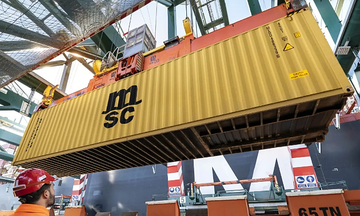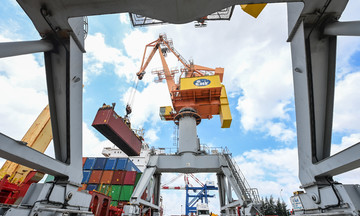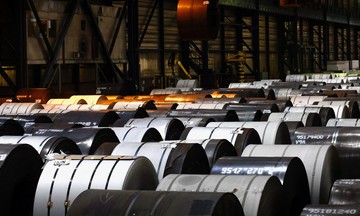Researchers at Northwestern University have introduced a new chemical recycling process in the journal Nature on 2/9, potentially eliminating the labor-intensive process of sorting plastic waste.
The process uses an organonickel catalyst to selectively break down polyolefins. This thermoplastic family includes polyethylene (PE) and polypropylene (PP), which account for nearly two-thirds of global plastic production. They are commonly used in plastic bags, food wrap, baby bottles, yogurt containers, and condiment bottles.
"These plastics have very short lifespans and are mostly single-use. Without effective recycling methods, they end up in landfills, persisting for decades before breaking down into harmful microplastics," said Yosi Kratish, a co-author of the study.
 |
Workers sort plastic at a recycling plant near Nairobi, Kenya, in October 2020. Photo: Reuters |
Workers sort plastic at a recycling plant near Nairobi, Kenya, in October 2020. Photo: Reuters
Polyolefins have a very low recycling rate, estimated at 1-10% according to a 2023 Nature study. Meanwhile, the plastics industry produces over 220 million tons of these materials annually.
One of the biggest obstacles to recycling is sorting the waste beforehand. This requires meticulous work because each type of plastic has different properties and melting points and cannot be recycled together. Contamination from food residue, different plastic types, or non-plastic materials can ruin an entire recycling batch.
Current recycling technologies also have limitations. The most common method, mechanical recycling, involves shredding, melting, and reforming the plastic into lower-quality pellets.
Another solution is incineration at 400-700 degrees Celsius, which creates a mixture of liquid and gas. While this produces valuable byproducts, it is energy-intensive.
The Northwestern University team's solution is hydrogenolysis, a process that uses hydrogen gas and an organonickel catalyst to break down the plastic. This catalyst acts like a "specialized scalpel," targeting and severing the bonds between carbon atoms, disrupting the durable plastic structure and selectively degrading polyolefins even when mixed with other plastics.
As the catalyst breaks down PE and PP, the low-value solid plastic is converted into liquid waxes and oils, which can be upcycled into higher-value lubricants, fuels, and waxes. Besides being reusable, the catalyst can even break down plastic contaminated with polyvinyl chloride (PVC), a toxic material that typically renders other plastics unrecyclable.
PVC, a rigid plastic used in pipes, flooring, and medical devices, looks similar to other plastics but is much less stable when heated. When it breaks down, PVC releases highly corrosive hydrogen chloride gas, which deactivates catalysts and disrupts the recycling process.
However, the Northwestern University process performs even better when contaminated with PVC. The study found improved efficiency even with a 25% PVC contamination rate.
Hydrogenolysis is not a new concept. However, existing processes require high heat and expensive catalysts like platinum and palladium, both precious metals.
Nickel, in contrast, is abundant, inexpensive, and readily available. The organonickel catalyst requires only half the hydrogen pressure of other nickel-based catalysts. It also uses 10 times less catalyst while being 10 times more active.
Bao Bao (Phys, Nature)












